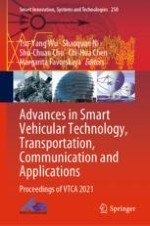2022 | OriginalPaper | Buchkapitel
19. Joint Adaptive Reception Algorithm with Ant Colony Optimization for Asynchronous Cooperation Transmission Systems
verfasst von : Aiyong Zhang, Changjie Liu, Pengfei Qin
Erschienen in: Advances in Smart Vehicular Technology, Transportation, Communication and Applications
Verlag: Springer Singapore
Aktivieren Sie unsere intelligente Suche, um passende Fachinhalte oder Patente zu finden.
Wählen Sie Textabschnitte aus um mit Künstlicher Intelligenz passenden Patente zu finden. powered by
Markieren Sie Textabschnitte, um KI-gestützt weitere passende Inhalte zu finden. powered by
